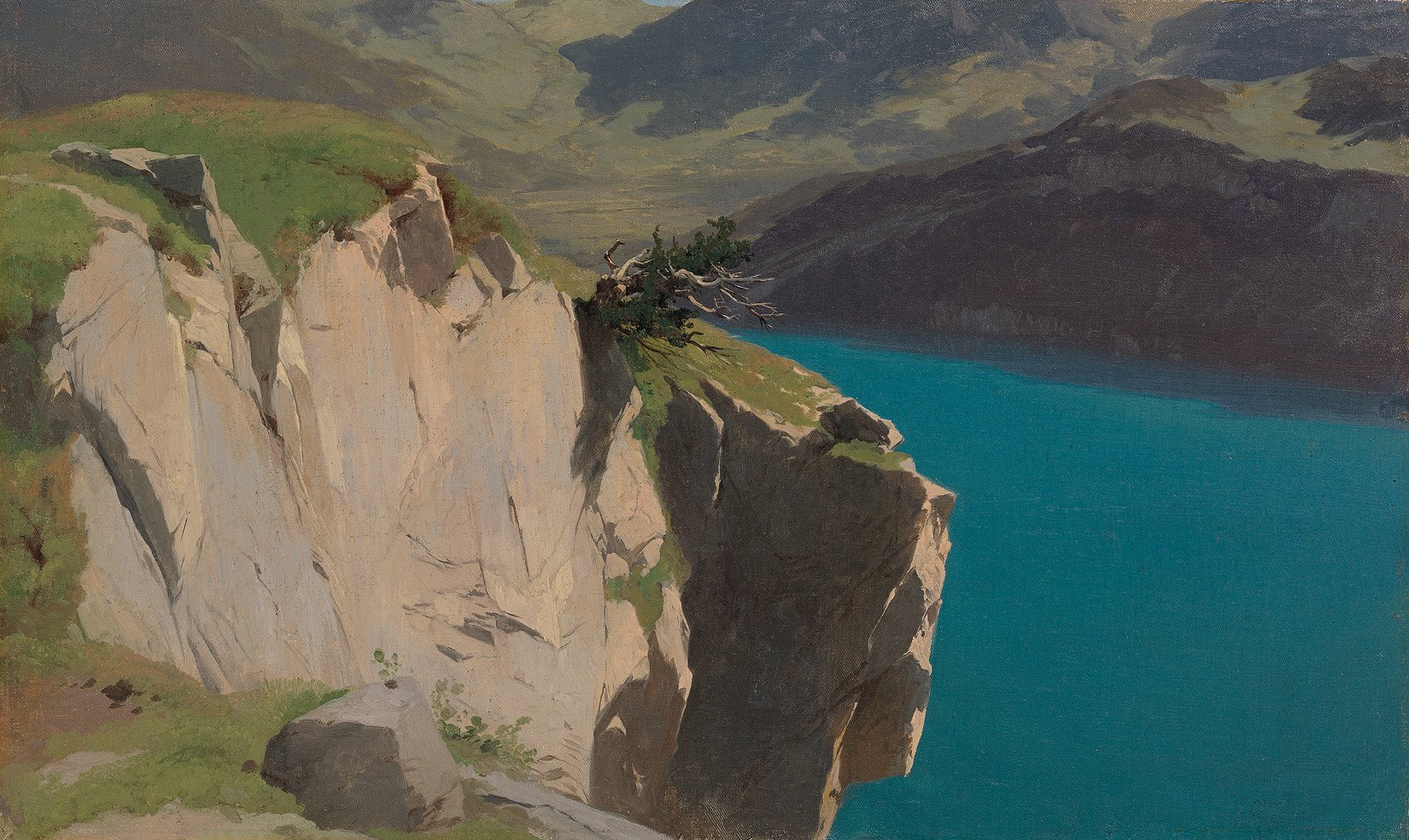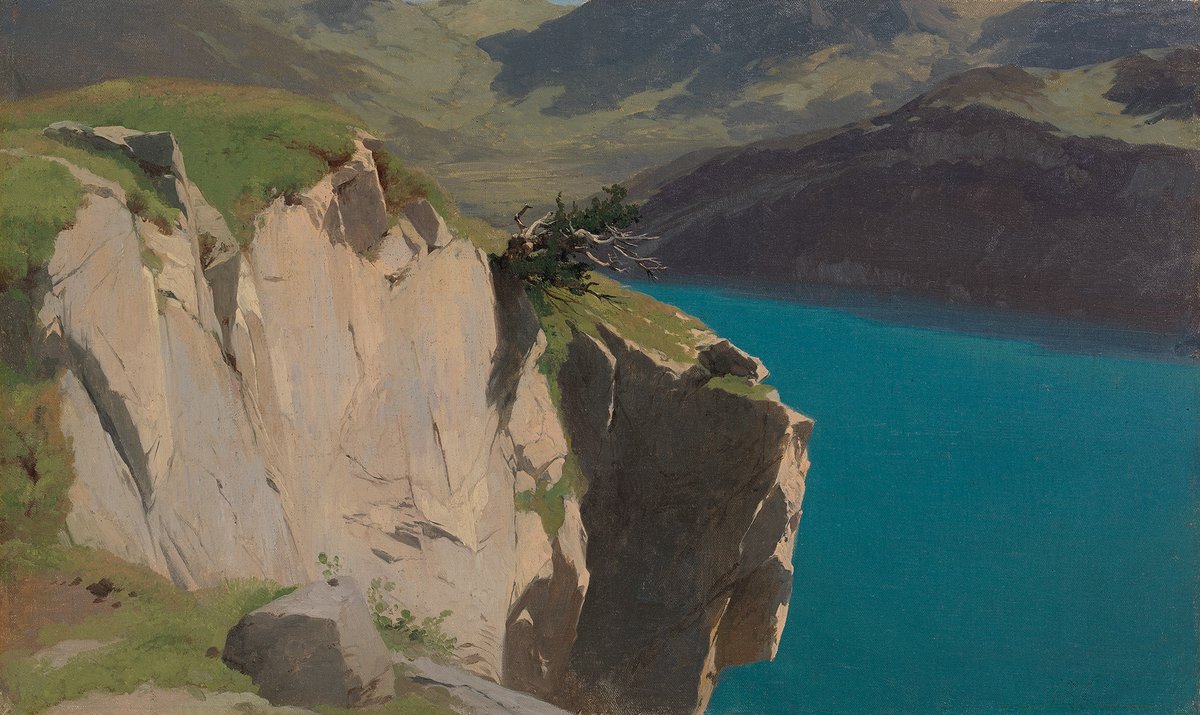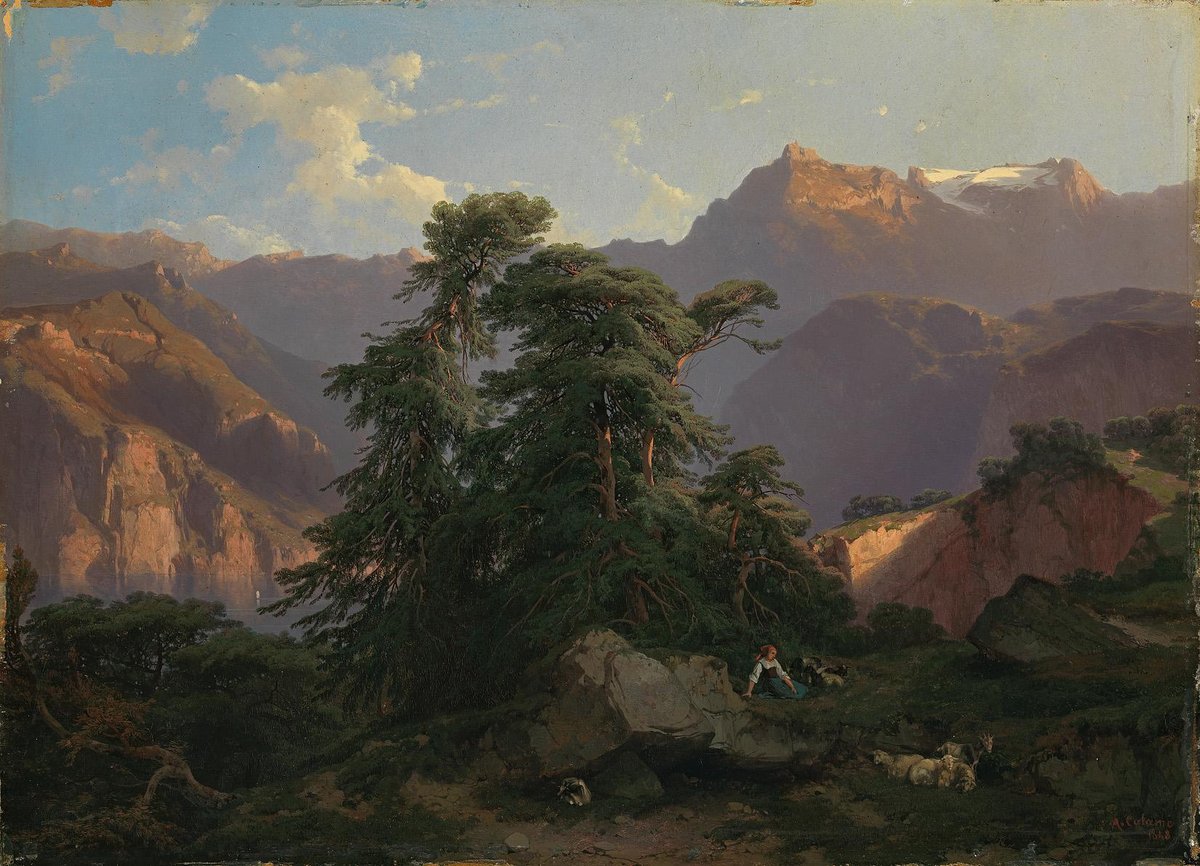Alexandre Calame
Cliffs near Seelisberg, 1861

Alexandre Calame
Cliffs near Seelisberg, 1861
Kunst Museum Winterthur, Stiftung Oskar Reinhart, Ankauf, 1935
Foto: SIK-ISEA, Zürich (Philipp Hitz)
Although Alexandre Calame lived with a deformed foot and, after an accident, had only one eye, the painter often went hiking. At the age of 61, he ventured to the edge of steep cliffs near the Rütli to look out over Lake Lucerne and paint this spectacular picture. The vantage point he chose for this allows us to look down into the depths. The solid ground ends almost exactly in the centre of the picture. In this way, Calame opens up the land to the right, creating the impression of standing directly at the edge of the abyss – or even hovering above it. Calame’s biographer, Eugène Rambert, wrote: «Anyone else would have stepped back, overwhelmed by the vertigo. But for him it was exactly what he wanted: the feeling of the abyss, the vertigo».
The work belongs to a group of almost 500 pictures and studies that were auctioned off from Calame’s estate after his death in 1865. Throughout his life, he kept these drawings and oil studies that he had created outdoors, using them to prepare large paintings. Consequently, this work was not intended for the general public, even though its format and execution correspond to that of an independent painting.

Alexandre Calame
Cliffs near Seelisberg, 1861
Kunst Museum Winterthur, Stiftung Oskar Reinhart, Ankauf, 1935
Foto: SIK-ISEA, Zürich (Philipp Hitz)
Calame, who is considered to be the founder of the ‹Geneva School› of Alpine painting, played here with strong colours and the contrasts of foreground and background, above and below, light and dark. The narrowly framed detail without a line of horizon breaks with all the conventions of classical landscape composition. His official paintings, on the other hand, such as The Uri Rotstock seen from Seelisberg, which the artist painted in 1848 during his first stay on the Seelisberg, are in the tradition of the heroic, romanticised, idealised conception of landscape. This also reflects the academic, crystal-clear style of painting that was entirely in keeping with the taste of his time. Calame catered to the Romantic love of nature and admiration of the mountains while also placing his painting at the service of the patriotism flourishing in the 19th century. The artist, who had been raised in bitter poverty, enjoyed great success with his work.

Alexandre Calame
The Uri Rotstock seen from Seelisberg, 1848
Kunst Museum Winterthur, Stiftung Oskar Reinhart, Ankauf, 1930
Foto: SIK-ISEA, Zürich (Philipp Hitz)


